Why You Should Leave Your Leaves
Leaves are Free and Make the Best Mulch

Photo by Barbara Driscoll
Did you know that leaves are nature’s fertilizer and provide essential nutrients for the trees from which they fall? They also provide shelter for many insects in every season and are an essential part of an intact ecosystem supporting wildlife. If we don’t have leaves, most of our butterflies, moths, bees and insects won’t have the cover they need to reach maturity, and our birds and wildlife won’t have the food they need to survive. Leaf litter (fallen leaves) provides winter habitat for many pollinators and 94% of caterpillars—the two classes of insects we need most. Leaving your leaves also helps reduce soil erosion, flooding, air, water and noise pollution, and saves you time and money. Leaving your leaves is high on the list of sustainability practices!
Top 10 Reasons You Should Leave the Leaves
Leaving leaves on your property instead of blowing them to the curb for bagging and sending them to the compost facility can have numerous benefits:

- Natural Mulch: Leaves act as a natural mulch, insulating your soil and helping it retain moisture, reducing the need for additional watering.
- Soil Enrichment: As leaves decompose, they release valuable nutrients into the soil, enhancing its fertility and improving plant growth.
- Organic Matter: The decomposing leaves increase the organic matter content in your soil, which improves soil structure, aeration, and drainage.
- Erosion Control: A layer of leaves helps prevent soil erosion, especially in sloped areas, by shielding the soil from heavy rains and wind.
- Biodiversity: Leaf litter provides habitat and food for various beneficial microorganisms, insects, birds and small wildlife, contributing to a healthier ecosystem.
- Pollinator Support: Many native bees and other pollinators use leaf litter as a nesting material, supporting local biodiversity and garden pollination.
- Cost Savings: By reducing the need for mulch and fertilizers, you can save money on lawn and garden maintenance.
- Resource Conservation: By leaving leaves on your property instead of blowing them to the curb or stuffing them in yard waste bins, you help reduce the burden on municipal collections and composting operations and lower transportation costs for yard waste disposal.
- Environmental Impact: Decreasing the volume of yard waste sent to compost facilities reduces greenhouse gas emissions associated with gas leaf blowers, transportation and processing.
- Less Labor: Raking and blowing leaves or stuffing them in yard waste bins can be time-consuming. Allowing them to stay on your property is a more efficient and sustainable approach to yard care.
List courtesy of City of Greensboro Office of Sustainability & Resilience edited by Forsyth Audubon
It’s Easy to Do!

Participation in the Leave Your Leaves program is easy. Just skip your town’s loose-leaf collection and do one of the actions below—or some combination that works best for your situation. If you find you have too many leaves, strongly consider reducing your lawn area and increasing the mulched area under trees and in garden bed areas.
BEST: Leave your leaves where they fall. Effort level 0! This works well on heavily wooded properties. Sidewalks and driveways should be cleared as needed and the leaves raked under trees or to mulched beds.
VERY GOOD: In areas where that’s not an option, such as areas of grass or moss lawns you need to maintain, gently rake or blow leaves with an electric blower (best for environmental and noise pollution) into adjacent areas to use as mulch such as:
– under your trees in an even “carpet” extending out as far past the tree canopy dripline as possible.
– under your shrubs
-in your garden beds, which, hopefully, are filled with native plants
AS A LAST RESORT: Mulch a thin layer of leaves directly into your grass with a mulching lawnmower (preferably an electric one to prevent pollution). -OR- Use leaves in your compost pile or leaf mould or advertise on neighborhood email that you have leaves to share.
.
Helpful Tips for Healthy Trees
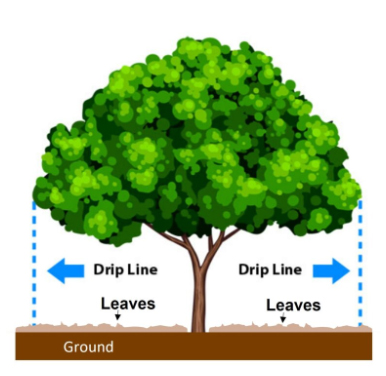
Leaving your leaves on the ground fertilizes the soil and helps trees to thrive. Here are some specific strategies for supporting healthy trees with leaves:
THE RIGHT WAY TO ADD LEAVES UNDER TREES
It’s important when adding leaves to those already under trees to mimic nature’s even carpet of fallen leaves and to have the leaf layer extend to at least the drip line of the canopy. Think of this as the outer edge of the leaf canopy as viewed from above. Additional dos and don’ts include:
.
.
.
.
.
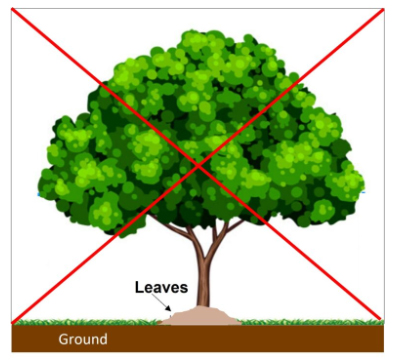
Don’t pile leaves around the base of the tree. Leave the tree flare at the base of the tree uncovered since it needs to be in the open air to prevent rot, disease, and insect and rodent damage in this important area. Tree flare or root flare is the bark covered trunk just above the soil line where the tree trunk flares out in the transition to tree roots. (Note: When planting new trees it is also critical to keep this part of the tree trunk above the soil line).
Rake leaves from adjacent areas to underneath the trees from which they’ve fallen whenever possible. Trees are best adapted to the acidity levels and micro-environment their own leaves create as they decompose.
Don’t make the leaf layer too thick so that it blocks water from reaching the ground underneath the tree.
View the Leave Your Leaves Webinar
Check out our Leave Your Leaves webinar (9 minutes) hosted by New Hope Bird Alliance and Audubon North Carolina.
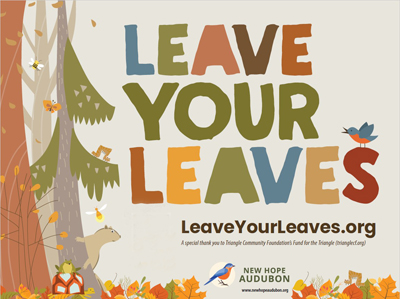
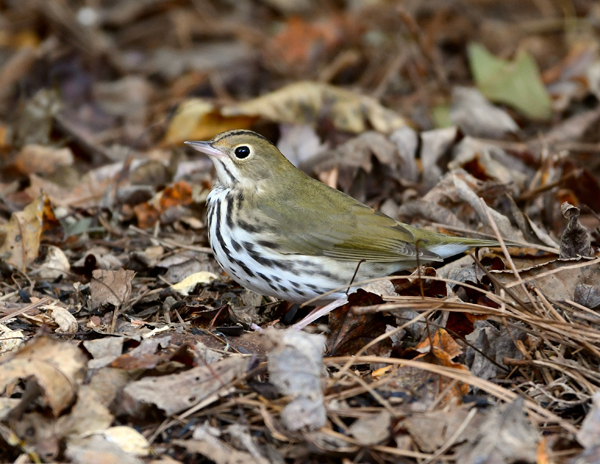
Take the Pledge to Leave Your Leaves
Demonstrate your support for climate resilience and biodiversity by pledging to leave your leaves and receive a free Forsyth Audubon Leave Your Leaves yard sign!
Help Spread the Word
If you would like to offer your time to make presentations to schools, garden clubs or other organizations to spread the word, let us know. The Leave the Leaves presentation provides a background on how leaves benefit our ecosystem, support our insects, bees, birds and wildlife, improve tree and soil health and reduce flooding, erosion, air, water and noise pollution and save us time and money. We also have toolboxes designed for teachers and homeschoolers to use to encourage students to learn about the benefits of leaving the leaves. These toolboxes are loaded with fun, hands-on activities customized to grades K-12.
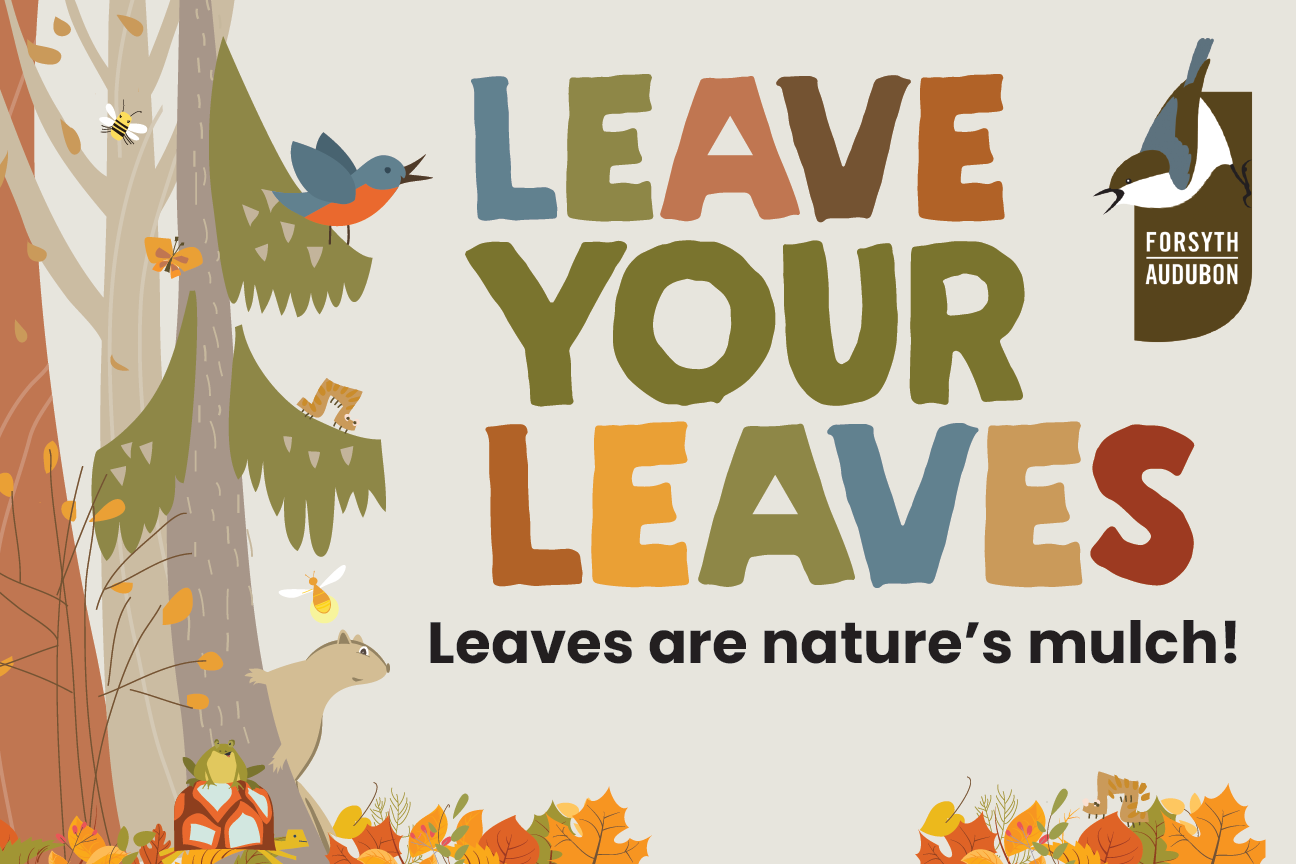 | 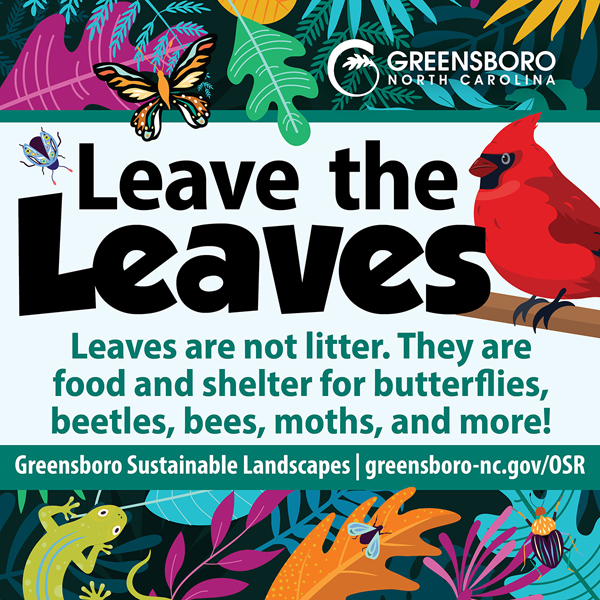 |  |  |  |
.

